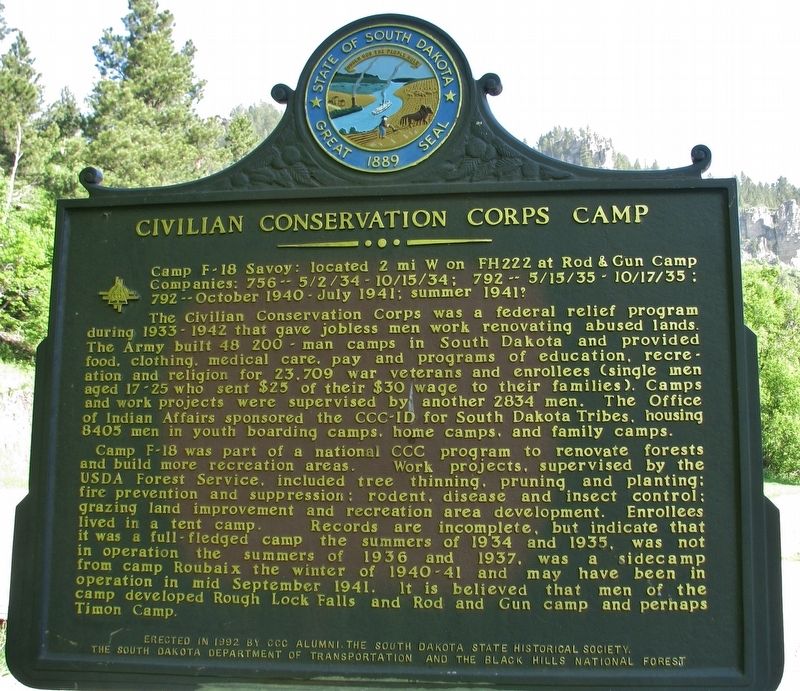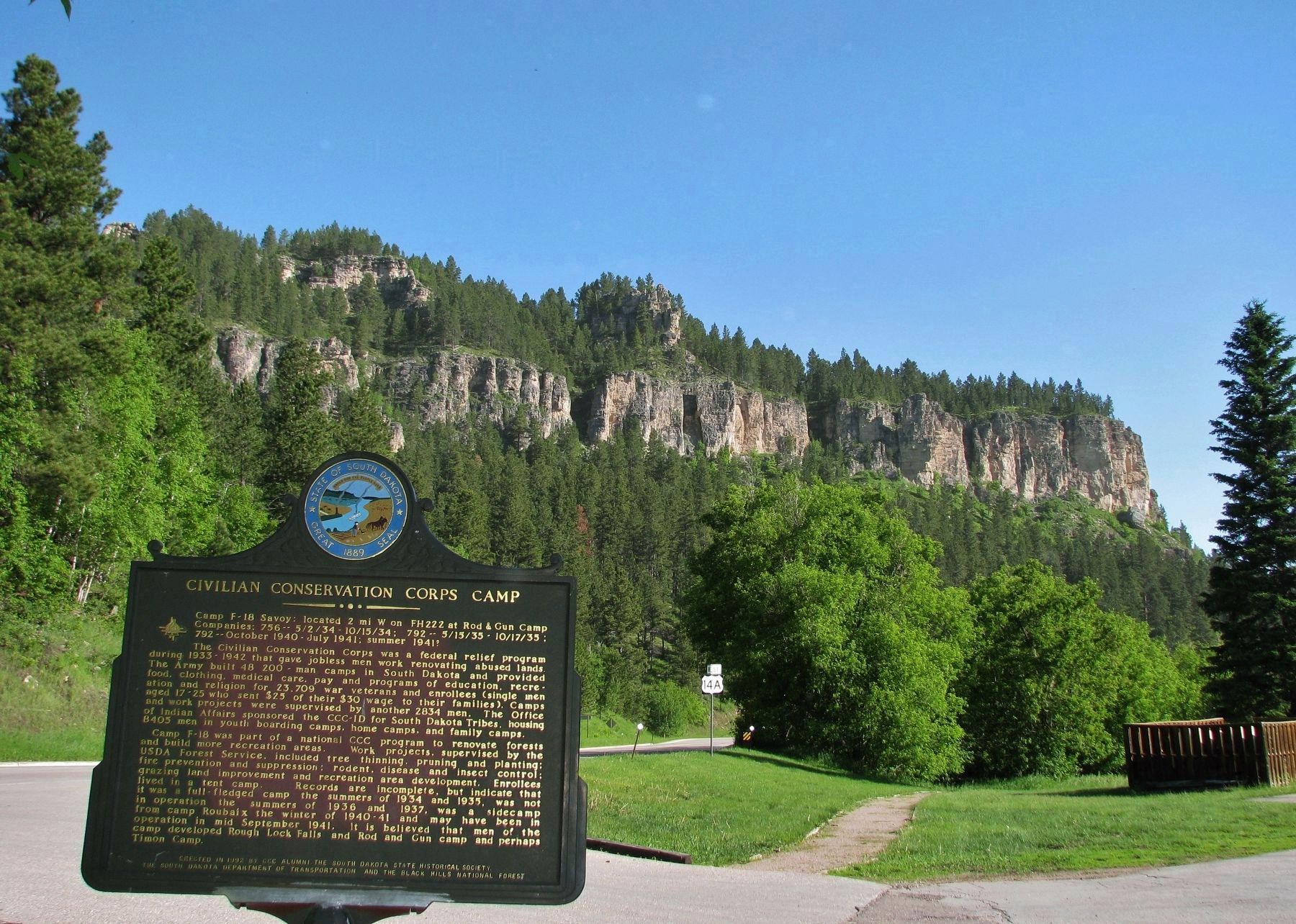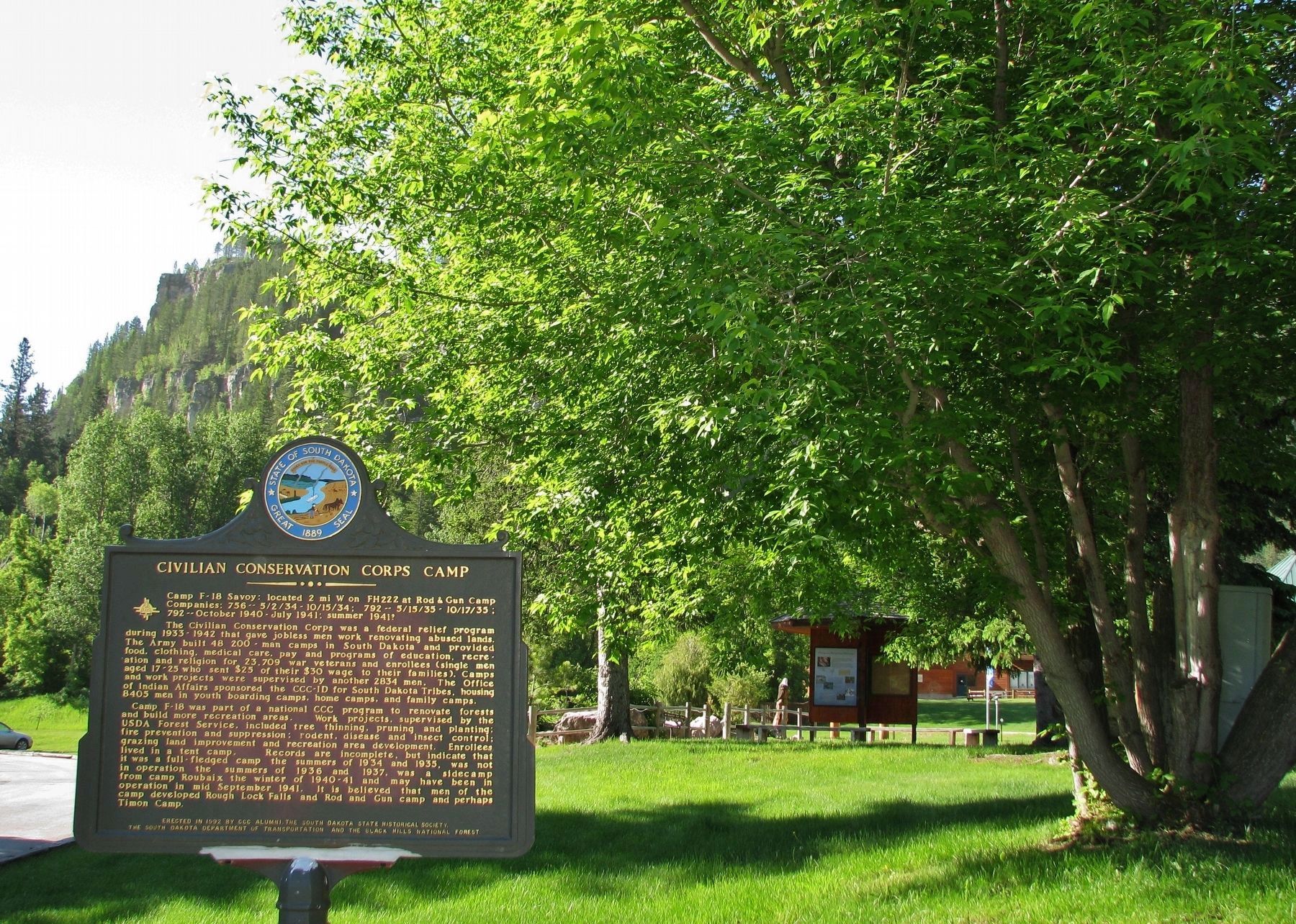Near Lead in Lawrence County, South Dakota — The American Midwest (Upper Plains)
Civilian Conservation Corps Camp
The Civilian Conservation Corps was a federal relief program during 1933-1942 that gave jobless men work renovating abused lands. The Army built 48 200 man camps in South Dakota and provided food, clothing, medical care, pay and programs of education, recreation and religion for 23,709 war veterans and enrollees (single men aged 17-25 who sent $25 of their $30 wage to their families). Camps and work projects were supervised by another 2834 men. The Office of Indian Affairs sponsored the CCC-ID for South Dakota Tribes, housing 8405 men in youth boarding camps, home camps, and family camps.
Camp F-18 was part of a national CCC program to renovate forests and build more recreation areas. Work projects, supervised by the USDA Forest Service, included tree thinning, pruning and planting; fire prevention and suppression; rodent, disease and insect control; grazing land improvement and recreation area development. Enrollees lived in a tent camp. Records are incomplete, but indicate that it was a full-fledged camp the summers of 1934 and 1935, was not in operation the summers of 1936 and 1937, was a sidecamp from camp Roubaix the winter of 1940-41 and may have been in operation in mid-September 1941. It is believed that men of the camp developed Rough Lock Falls and Rod and Gun camp and perhaps Timon Camp.
Erected 1992 by CCC Alumni, South Dakota State Historical Society, South Dakota Departmant of Transportation, and Black Hills National Forest.
Topics and series. This historical marker is listed in this topic list: Charity & Public Work. In addition, it is included in the Civilian Conservation Corps (CCC) series list.
Location. 44° 21.189′ N, 103° 55.886′ W. Marker is near Lead, South Dakota, in Lawrence County. Marker is on U.S. 14A north of Roughlock Falls Road (County Highway 222), on the right when traveling north. Marker is located at entrance to Latchstring Restaurant parking lot, on the right-hand side as you enter the lot. Touch for map. Marker is at or near this postal address: 21046 US Highway 14A, Lead SD 57754, United States of America. Touch for directions.
Other nearby markers. At least 8 other markers are within 8 miles of this marker, measured as the crow flies. Spearfish Canyon Through Time (approx. 5 miles away); Spearfish Canyon Flora and Fauna (approx. 5 miles away); The Glover House (approx. 7.8 miles away); City Hall and Masonic Temple (approx. 7.9 miles away); Christ Episcopal Church and Grier Statue
(approx. 7.9 miles away); Thomas Johnston Grier (approx. 7.9 miles away); Dakota Rebekah Lodge (approx. 8.1 miles away); United States Post Office (approx. 8.1 miles away). Touch for a list and map of all markers in Lead.
Related markers. Click here for a list of markers that are related to this marker.
Also see . . . Civilian Conservation Corps.
The Civilian Conservation Corps (CCC) was a public work relief program that operated from 1933 to 1942 in the United States for unemployed, unmarried, men from relief families as part of the New Deal. Each CCC camp was located in the area of particular conservation work to be performed and organized around a complement of up to 200 civilian enrollees in a designated numbered "company" unit. The CCC camp was a temporary community in itself, structured to have barracks (initially Army tents) for 50 enrollees each, officer/technical staff quarters, medical dispensary, mess hall, recreation hall, educational building, lavatory and showers, technical/administrative offices, tool room/blacksmith shop and motor pool garages. (Submitted on December 15, 2017, by Cosmos Mariner of Cape Canaveral, Florida.)
Credits. This page was last revised on October 19, 2020. It was originally submitted on December 15, 2017, by Cosmos Mariner of Cape Canaveral, Florida. This page has been viewed 183 times since then and 11 times this year. Photos: 1, 2, 3. submitted on December 15, 2017, by Cosmos Mariner of Cape Canaveral, Florida. • Bill Pfingsten was the editor who published this page.


